Osmia is a widespread genus primarily active in the spring from the first warm days of April into June. While many are difficult to ID even with a microscope, there are several larger species that are of conservation concern that can be readily recognized from photos.
Most nest in above ground cavities, including hollow stems. Look for them in shrubby areas and attract them to your yard by leaving dead stems standing. As of January 2021, 15 species in the genus Osmia have been recorded in Vermont, 4 of which have been confirmed through iNaturalist.
Genus level ID
As pollen-collecting members of the family Megachilidae, females have pollen carrying hairs on the underside of the abdomen. These hairs are referred to as scopal hairs, and are either bright white or black depending on the species. Most Osmia are a shiny blue color, though two non-native and a few very rare species have dark bodies. The non-native ones – the Hornfaced Bee and Taurus Mason Bee – are covered with pale orangish hair that make them distinctive as a group.
Most are smaller than a honey bee, though one, the Bufflehead Mason Bee, is large enough to be occasionally mistaken for a bumblebee.
In most species, the females are easier to identify from photos.
Similar Genera
Leafcutter Bees (Megachile) – Leafcutter Bees lack the metallic shine of most Mason Bees and many Leafcutters have distinct hair bands on their abdomen. In addition, they are generally larger and active later in the summer (June – October).
Small Mason Bees (Hoplitis) – As the name implies, Small Mason Bees are smaller than most Mason Bees. One rare species, the White-fronted Small-Mason (Hoplitis albifrons) could be confused with a Mason Bee, though it lacks any metallic shine.
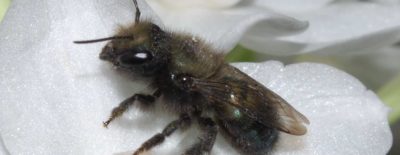
Blue Orchard Bee (Osmia lignaria)
A large, early spring species. Uncommon but widespread. Image courtesy Doug Burnham
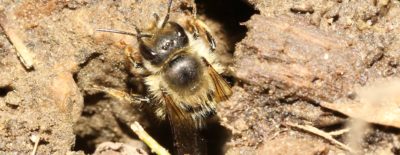
Hornfaced Bee (Osmia cornifrons)
A relatively recent introduction to VT that is now widespread and common in the spring. Image courtesy Michael Veit
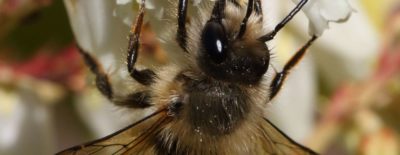
Taurus Mason Bee (Osmia taurus )
Very similar to the Horn-faced Mason Bee. Also introduced and spreading, first found in VT in 2020. Image courtesy Michael Veit
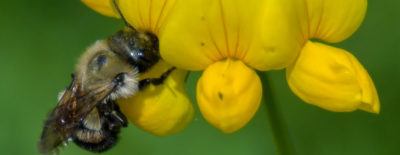
Bufflehead Mason Bee (Osmia bucephala)
Large, with an even larger head this is a distinctive and widespread species. Image courtesy Peggy Faucher
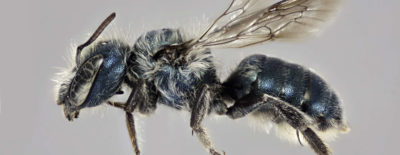
Distinct Mason Bee (Osmia distincta)
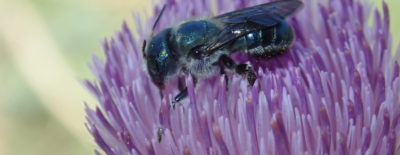
Texas Mason Bee (Osmia texana)
A rare, western thistle specialist. Image courtesy madfox
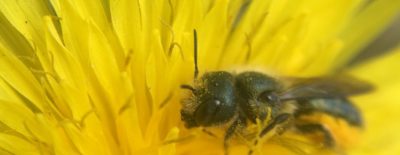
Georgia Mason Bee (Osmia georgica)
Uncommon, late spring species associated with flowers in the Asteraceae family.
Species likely not identifiable from photos
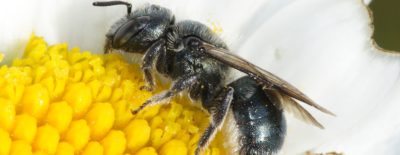
Dwarf Mason Bee Osmia pumila
Probably the most common Mason Bee in the state. Small and blue with white scopal hairs. Image courtesy Michael Veit.
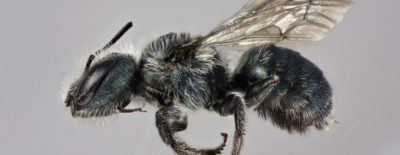
Maine Blueberry Bee Osmia atriventris
Medium-small, with dark scopal hairs
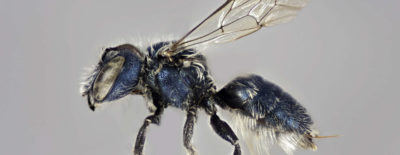
White-bellied Mason Bee Osmia albiventris
Small, pale scopal hairs.
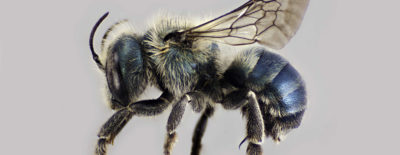
Similar Mason Bee Osmia similima
Large, with dark scopal hairs. Rare.
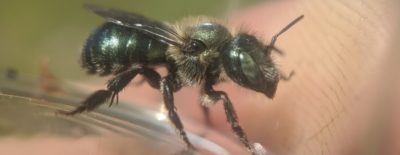
Collinsia Mason Osmia collinsiae
Dark scopal hairs. Uncommon to rare.
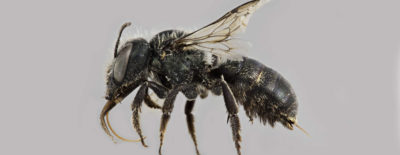
Friendly Mason Bee Osmia proxima
Dark scopal hairs. No recent records.
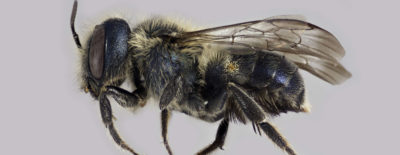
Twig Mason Bee Osmia virga
Medium sized, dark scopal hairs. Blueberry specialist, first recorded in 2020.
Unless otherwise specified, photos in the grid are courtesy of Margarita Miklasevskaja at PCYU with funding from NSERC-CANPOLIN.
Please note that many of our datasets have not been published yet, so the maps are incomplete.






